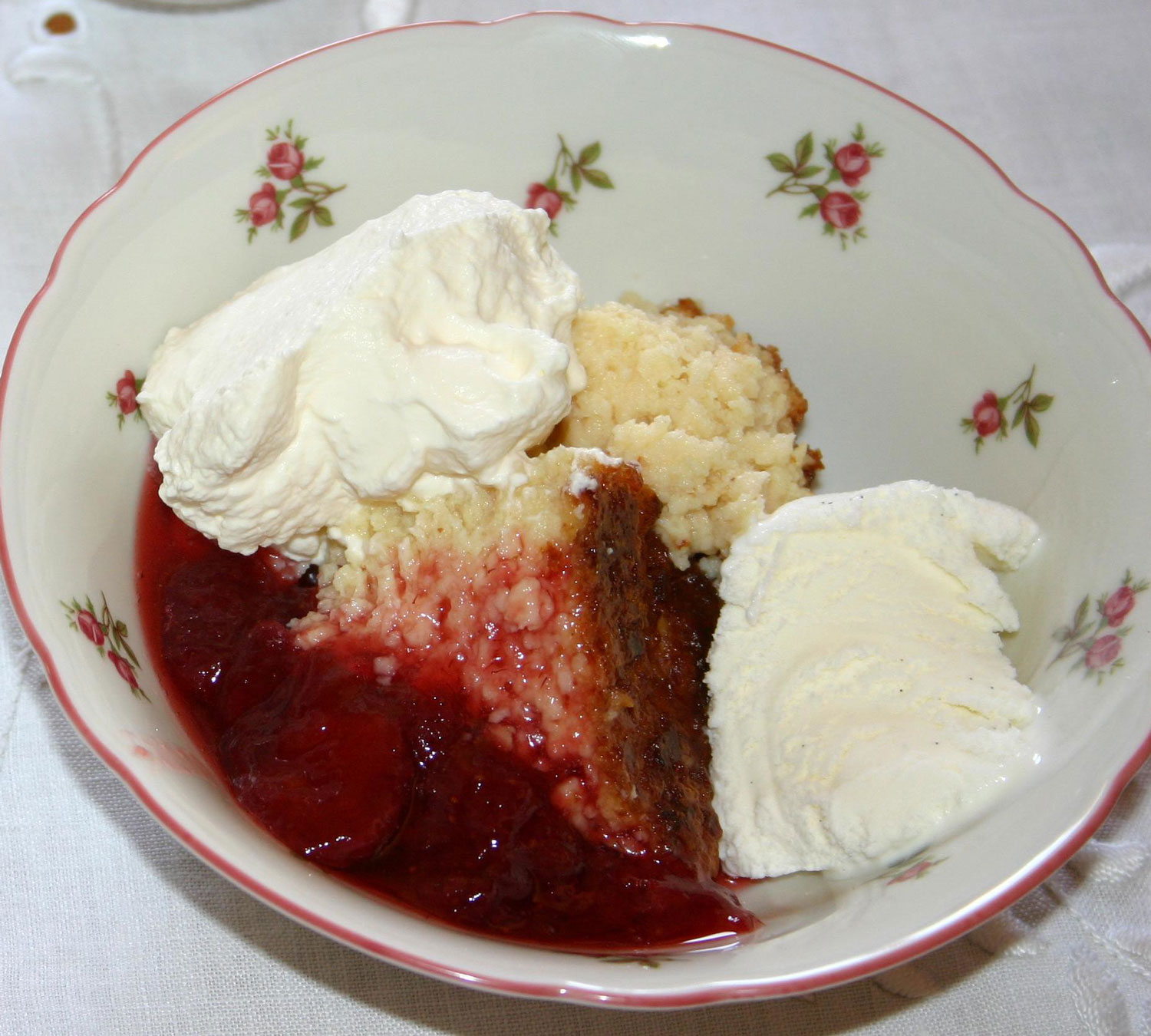- Startpage
- In English
- The Inventory
- Ostkaka (Swedish cheesecake)
Ostkaka (Swedish cheesecake)
Ostkaka is a traditional Swedish oven-baked dessert based on milk, flour, and rennet. It was traditionally served during festivities and on special occasions. Ostkaka is eaten throughout the entire country, but is particularly associated with the regions of Hälsingland and Småland.
Location: Nation wide
Two types of ostkaka with different ingredients and accompaniments have originated in the two regions. Milk, flour, and rennet are the main ingredients in both types. The Småland variety also includes eggs, almonds, sugar, and cream, and is served with jam and whipped cream. Its texture resembles scrambled eggs. The Hälsingland variety normally does not include eggs, and never almonds. It has a smoother, slightly squeaky texture. It can be served with saffron and/or a juice-based sweet sauce.
One of the earliest records of ostkaka in Sweden dates from around 1520. Its origins probably go back even further, and it has most likely been served on festive occasions historically. The recipes for ostkaka had many variations and could differ between regions, communities, and even families.
Ostkaka is still a living tradition in Sweden, particularly in Hälsingland and Småland. The knowledge and recipes are passed on orally, inherited, or taken from books or the internet. As artisanal and locally produced food has become more popular in recent years, the interest in traditionally prepared ostkaka has increased. Ostkaka is sold in convenience stores all over Sweden, and is served at open-air museums. The tradition continues to evolve, with recipes such as licorice ostkaka and ostkaka chocolates.


.jpg)